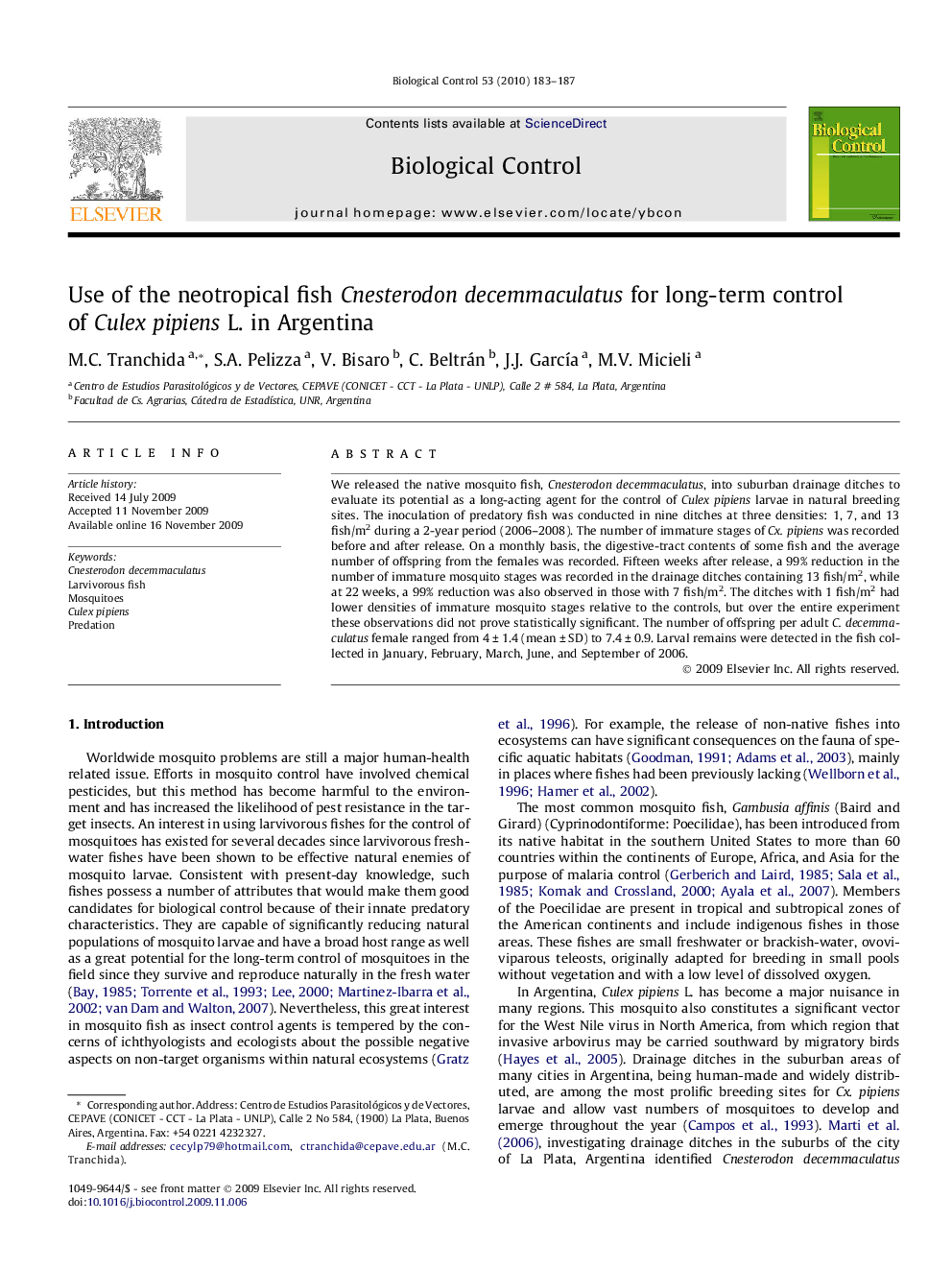| Article ID | Journal | Published Year | Pages | File Type |
|---|---|---|---|---|
| 4504476 | Biological Control | 2010 | 5 Pages |
Abstract
We released the native mosquito fish, Cnesterodon decemmaculatus, into suburban drainage ditches to evaluate its potential as a long-acting agent for the control of Culex pipiens larvae in natural breeding sites. The inoculation of predatory fish was conducted in nine ditches at three densities: 1, 7, and 13 fish/m2 during a 2-year period (2006-2008). The number of immature stages of Cx. pipiens was recorded before and after release. On a monthly basis, the digestive-tract contents of some fish and the average number of offspring from the females was recorded. Fifteen weeks after release, a 99% reduction in the number of immature mosquito stages was recorded in the drainage ditches containing 13 fish/m2, while at 22 weeks, a 99% reduction was also observed in those with 7 fish/m2. The ditches with 1 fish/m2 had lower densities of immature mosquito stages relative to the controls, but over the entire experiment these observations did not prove statistically significant. The number of offspring per adult C. decemmaculatus female ranged from 4 ± 1.4 (mean ± SD) to 7.4 ± 0.9. Larval remains were detected in the fish collected in January, February, March, June, and September of 2006.
Related Topics
Life Sciences
Agricultural and Biological Sciences
Agronomy and Crop Science
Authors
M.C. Tranchida, S.A. Pelizza, V. Bisaro, C. Beltrán, J.J. GarcÃa, M.V. Micieli,
